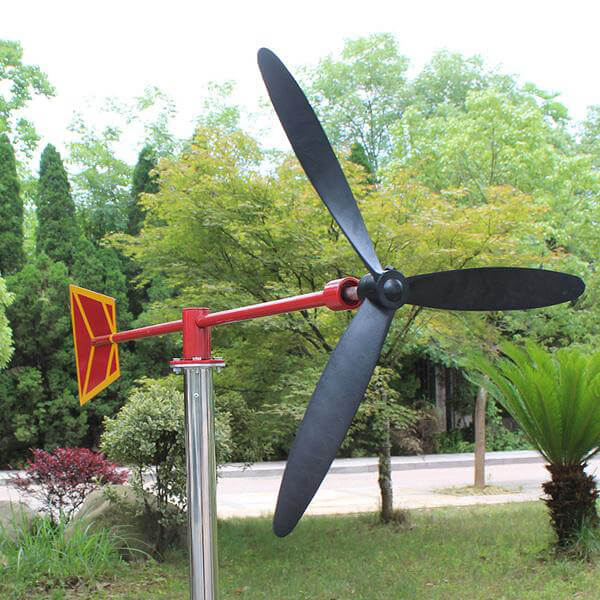What is an anemometer?
An anemometer is an instrument that measures the velocity of air, sometimes called a wind sensor. The earliest anemometers originated hundreds of years ago and were used to roughly measure wind. With the continuous updating of technology, the current anemometers can provide a variety of highly accurate data. There are many types of anemometers. Some are very common, while others are rare. Finding an anemometer that suits your specific needs is often a daunting task.
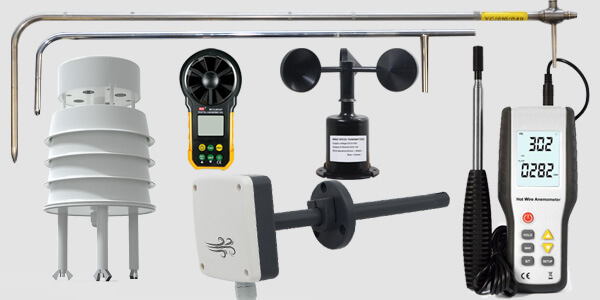
Common Applications of Anemometer:
- Measure the speed and direction of the average flow.
- Measure the pulsating velocity and frequency spectrum of the incoming flow.
- Measure the Reynolds stress in the turbulent flow and the speed correlation and time correlation between two points.
- Measure the wall shear stress (usually by using a hot film probe placed flush with the wall, the principle is similar to the hot wire-speed measurement).
- Measure fluid temperature (measure the change curve of probe resistance with fluid temperature in advance, and then determine the temperature based on the measured probe resistance.
7 different types of Anemometer:
- Cup Anemometers
- Propeller anemometers
- Hot-Wire anemometers
- Vane anemometers
- Ultrasonic anemometers
- Pressure anemometers
- Tube anemometers
1. Cup Anemometers
It is the most common type of anemometer. The cup-rotating anemometer was first invented by Ruby Sun in England. It was four cups at the time. Later, John Patterson removed one cup and used three cups instead. The three parabolic or hemispherical empty cups that are angled to each other and fixed on the frame are all along one side, and the entire frame and the wind cup are mounted on a freely rotatable shaft. The wind cup rotates around its axis under the action of wind, and its speed is proportional to the wind speed. Rotation speed can be recorded with electrical contacts, tachogenerator, or photoelectric counter. The three-cup anemometer is a commonly used measuring instrument in weather stations.
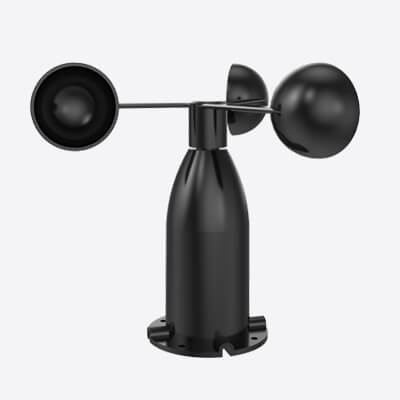
Advantages: The wind cup anemometer is an extremely widely used wind sensor. It has the advantages of a large wind measurement range, high strength, and corrosion resistance. The wind cup anemometer is cheap and has a variety of materials to choose from, such as aluminum alloy anemometer and polycarbonate anemometer.
Disadvantages: The wind cups of the three-cup anemometer used at present are mostly determined by experience and experiment, and there is no perfect theoretical basis for guidance. Therefore, it is not clear that the linearity of the anemometer is affected by the wind cup parameters.
2. Propeller anemometers
It is an anemometer with a set of three-blade or four-blade propellers rotating around a horizontal axis. The propeller is installed on the front of a wind vane so that its rotating plane is always facing the direction of the wind, and its rotation speed is proportional to the wind speed.
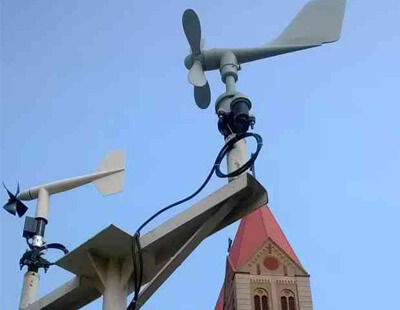
The blade rotation plane of the propeller anemometer should always be aligned with the direction of the wind, so its sensing part needs to be combined with the wind direction. The weather vane is made into a shape similar to that of the aircraft fuselage, maintaining a good streamline.
Advantages: easy to use and extensive, the overall structure is corrosion-resistant.
Disadvantages: The propeller anemometer often freezes in the associated part of the blade and the fuselage under cold weather and can not work normally, which causes great troubles in the actual weather observation work and causes a long-term lack of weather data.
3. Hot-Wire Anemometers
A hot-wire anemometer refers to a speed measuring instrument that converts flow velocity signals into electrical signals. The working principle is to place a thin metal wire (called hot wire) heated by electricity in the airflow. The heat dissipation amount of the hot wire in the airflow is related to the flow rate, and the heat dissipation causes the temperature change of the hot wire to cause the resistance change, the flow rate signal is converted electric signal.
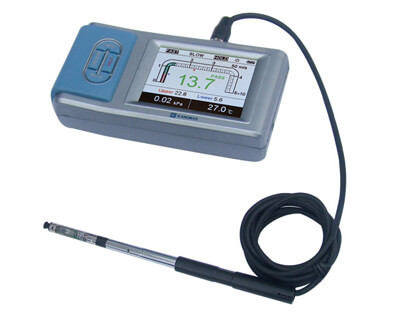
There are two types of wind speed: indirect heating and direct heating. The indirect heating type is generally manganese copper wire, its resistance temperature coefficient is close to zero, and its surface is additionally equipped with temperature measuring elements. The direct heating type is mostly platinum wire, which can directly measure its temperature while measuring the wind speed. The anemometer has high sensitivity at low wind speeds and is suitable for measuring small wind speeds. Its time constant is only a few hundredths of a second, and it is an important tool for atmospheric turbulence and agrometeorological measurement.
Advantages: It is a high-speed anemometer, which can be measured even at low speeds. Portable and easy to operate. No special software is required.
Disadvantages: The hot-wired anemometer is easily affected by the ambient temperature, and its temperature drift is one of the most important sources of error. Secondly, this anemometer is expensive and costly.
4. Vane Anemometers
The vane anemometer is a portable wind speed measuring device. The vane anemometers consist of a rotating wheel with blades. It generally consists of an impeller and a counting mechanism. When the wind blows, the wind speed is calculated based on the revolutions per minute of the impeller. This anemometers are battery-powered. If you want to camp, hike, sail, and hunt outdoor activities that may need to know the wind direction or wind speed information, these kinds of equipment are the best choice.
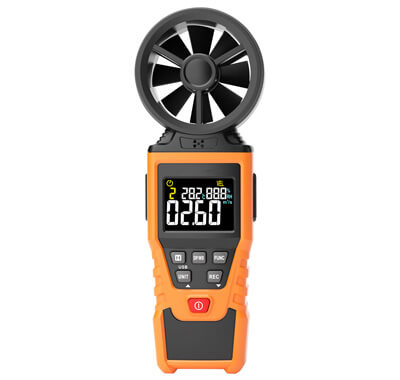
Advantages: The vane anemometers have a small structure and are convenient to carry, no installation is required, and it is convenient to use. Cheap price. The appearance is exquisite.
Disadvantages: The measured wind speed range is small, and the data cannot be viewed remotely. Battery power requires frequent disassembly and replacement of batteries.
It is a wind speed and wind direction measuring instrument that uses sending sound pulses to measure the time or frequency (Doppler transform) difference at the receiving end to calculate wind speed and direction.
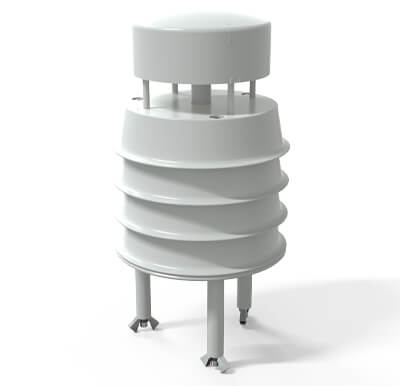
The propagation speed of sound waves in the actual atmosphere is equal to the sum of the propagation speed of sound waves in the static atmosphere and the airflow speed in the atmosphere. Therefore, within a certain distance, there is a difference between the time required for sound waves to propagate downwind and upwind. The air velocity can be obtained by measuring this time difference, that is, the air velocity measurement can be realized by measuring this time difference, which is the working principle of the ultrasonic anemometer.
The ultrasonic anemometers are more advanced instruments for measuring wind speed and direction. Because it overcomes the inherent shortcomings of mechanical anemometers, it can work normally all-weather and for a long time, and it is more and more widely used. It will be a powerful substitute for mechanical anemometers.
Advantages: no moving parts, no mechanical wear. The time response is fast, the sensitivity is high, and the minimum detection wind speed can reach a few centimeters per second.
Disadvantages: the installation is more complicated and the price is more expensive.
6. Pressure Anemometers
The pressure anemometers use the difference between the total pressure of the wind and the static pressure to measure the wind speed. Through the double pitot tube, one nozzle is facing the direction of the airflow and senses the full pressure of the airflow, and the other nozzle is behind the direction of the airflow. Because of the suction effect, the induced pressure is lower than the static pressure. . The pressure difference induced by the two pipes has a certain relationship with the wind speed.
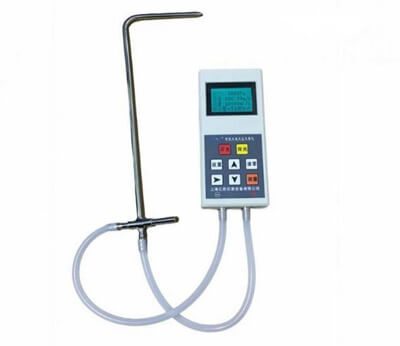
The most commonly used pressure anemometer is the Pitot tube. The Pitot tube is named after its inventor and French engineer Henri Pitot. It is composed of a total pressure probe and a static pressure probe. The difference between the total pressure (stagnation pressure) of the flowing air and the static pressure, that is, the dynamic pressure, is used to measure the wind speed. At the top of the pitot tube head, facing the incoming flow, a small hole is opened, which is used to feel the total pressure of the fluid. At about three times the pipe diameter from the head, several small holes are opened around the pipe wall. These small holes should be perpendicular to the wall and used to feel the static pressure of the fluid during use. The small holes on the head and the small holes on the sidewall are connected to two pipelines that are not connected and are respectively connected to the two ends of the differential pressure gauge. According to the differential pressure gauge readings and calculations using related formulas, the measured point can be obtained.
Advantages: high stability. It is suitable for the measurement of the positive pressure, negative pressure, and differential pressure of the gas within the pressure range of 3000Pa, as well as the measurement of wind speed and air volume.
Disadvantages: The use environment is relatively single and not very useful.
7. Tube anemometers
The tube anemometer is designed for pipe wind speed measurement. The high-precision wind speed measuring unit is sensitive and can quickly and accurately measure the small wind speed with good stability. At the same time, the real-time air volume value can be calculated according to the cross-sectional area of the pipe that is set to be measured. The tube anemometers adopt an anti-interference circuit design, which can withstand various strong electromagnetic interferences such as on-site inverters. It is free of screw terminal wiring and is more convenient to use.
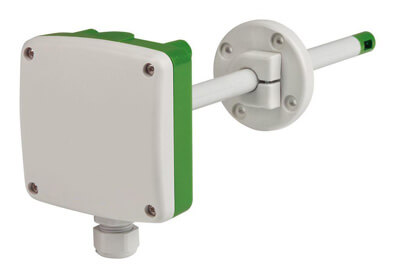
The tube anemometers use the hot-wire balance principle to measure wind speed. The response speed is fast, and the starting wind speed is small.
Advantages: It can measure the wind speed in confined spaces such as tubes, HVAC, etc., and the measurement is accurate.
Disadvantages: It needs to be punched and the installation is more complicated.
How to choose a suitable anemometer?
Range
Currently, there are various types of anemometers available in the market. Before purchasing an anemometer, it is essential to determine the wind speed range you need to measure and other features, such as temperature measurement, humidity measurement, etc. The power supply method also needs to be considered. Analyze whether mains power supply or battery power supply is more suitable for your needs.
Accuracy
The accuracy range of anemometers in the market varies from +/- 0.2% to +/- 2%. Generally, the higher the accuracy, the more expensive the price. Choosing the appropriate anemometers can not only meet your requirements but also save costs.
Quality
Select an anemometer with durable housing and high-quality materials to improve its lifespan. For long-term outdoor monitoring applications, good quality can save maintenance costs.
Application
Consider the environments in which you will use the anemometers, such as outdoor, industrial, laboratory, etc., to ensure you choose the appropriate type and protection level. Choose anemometers that is easy to install and use; most anemometers come with all the accessories needed for installation.
After-Sales Service
Consider whether the seller can assist users in solving problems that may arise during the installation and use of the anemometers. Good after-sales service can ensure the project is carried out safely and effectively.
Conclusion
There are many types of anemometers, and you can choose an anemometer that suits you according to your specific needs and applications. If you have any questions about the choice of the anemometers, please contact us, we have professional technicians to solve the problem for you.

